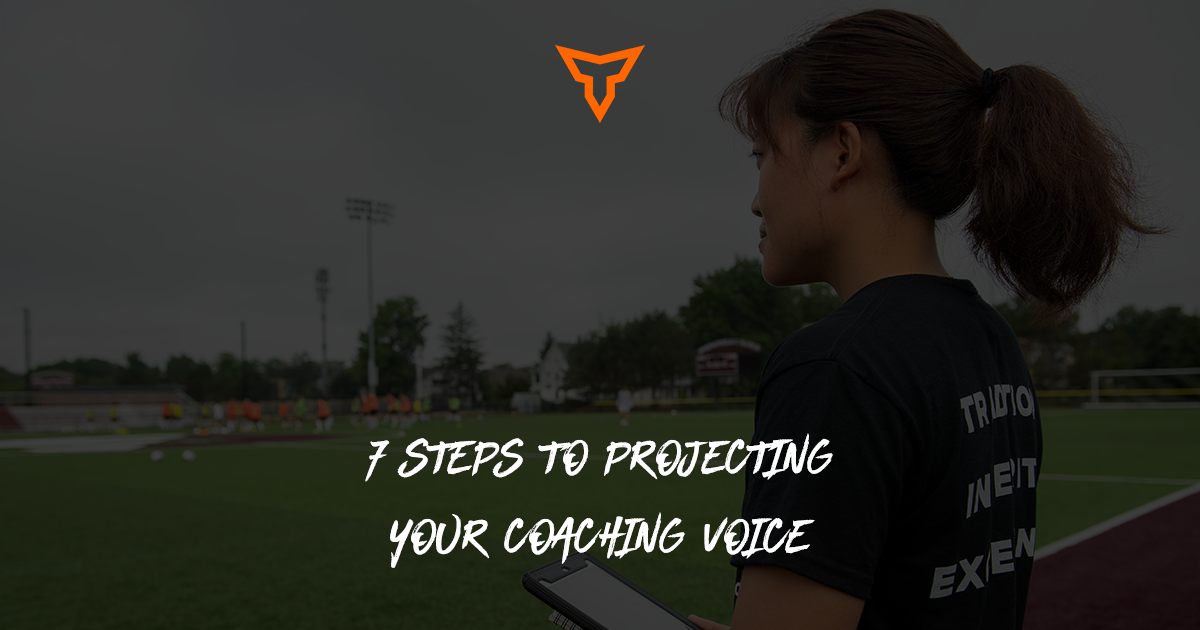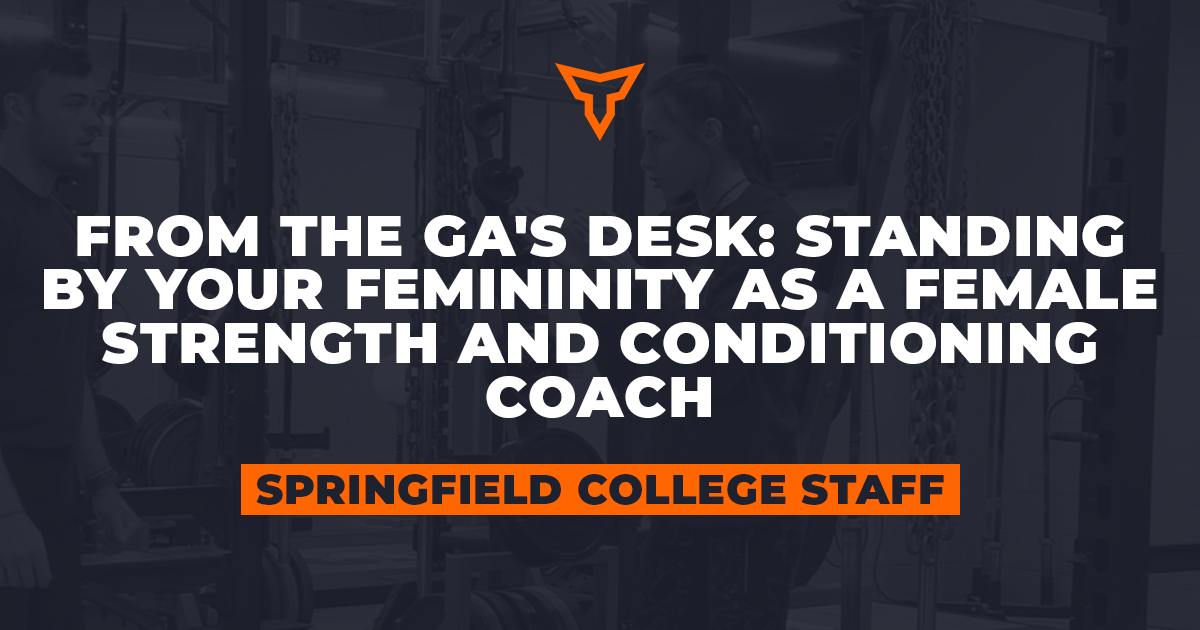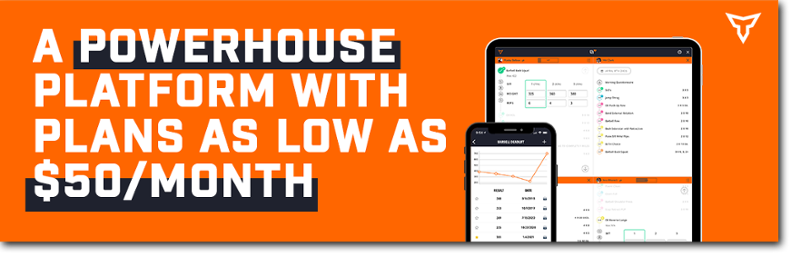From the GA's Desk: Experiences Coaching Abroad
Eloi Badia Rovira - Strength & Conditioning Graduate Assistant at Springfield College
Every coach will eventually need to make a big move during their career. The nomadic lifestyle of our profession is a reality that we must accept and embrace. As an international graduate student, I am not naive to the challenges of coaching and moving overseas. I hope my experiences and tips can provide guidelines that help you navigate through the changes you might encounter along the journey.
I started as a Handball coach and S&C coach for "Club Handbol Lleida Pardinyes" in Spain while pursuing my bachelor's in Exercise Science at INEFC Lleida, the city where I grew up and played the sport throughout my life. Handball is a sport that the majority of people only see during the Olympics. It is popular sport played professionally in Europe, Eastern Europe, and some countries in North Africa and the Middle east. I started to coach when I was 20, and never looked back.
In the summer of 2018, I was on tour in Boston, which brought me to Harvard Square. I walked by the athletic fields and the sports complex, ending at the strength and conditioning facilities. I was mesmerized by what I saw and how warmly the staff greeted me. That experience changed my whole career path, and my energy was laser-focused on one goal: becoming a strength and conditioning coach. I returned to Lleida with a clear plan, and my efforts paid off as I was rewarded with an exchange-student opportunity during my senior year at Southern Illinois University, Edwardsville (SIUE).
The first coaching experience I had in the US was joining the ARMY ROTC for fall 2018. Although not a formal coaching environment, it provided me with leadership skills that would serve me well down the road.
During the 2019 spring semester, I interned at the SIUE Athletic Performance Center. The internship allowed me to work daily with NCAA competitive athletes and was my first experience coaching in the college setting. The strength and conditioning coaches, Mark Jamison and Zach Rockford invested a lot of time and effort in intern development, pushed us daily, and made us grow in all aspects of coaching. They instructed us on ATR Block Periodization Model, velocity-based training, and flywheel training through our assignments and practicum with the rest of the interns. Sadly, I had to cut short the experience due to the COVID out-break, and I went back to Spain to work and coach at a Cross-Training facility.
Today, I find myself in my first semester of the Master's in Strength and Conditioning at Springfield College. I coach at Central City Boxing & Barbell, some Club Sports sparingly, and play on the Club Rugby Team. Currently, I am looking forward to the internships for the spring semester on-campus and off-campus over the summer.
There is No Right Fit for All
The first recommendation I would give for coaches who move abroad would be: where you were, do what you saw. Different settings require different training approaches.
There is no such thing as college varsity teams in Spain and most European countries. The university leagues are amateur, scholarships are non-existent or scarce, and definitely, tuition will not be paid for. Your way to the professional leagues is determined by your trajectory in private clubs and raw talent, not through college.
Soccer is king in Europe. Most of the research, training theories, and financial investments orbit around soccer. In my area, the FC Barcelona methodology is the most influential.
It is a holistic way of understanding the team sport that permeates through the rest of team sports. This philosophy applies not only to soccer but handball, basketball, rugby, hockey, etc. The ideas developed by Francisco Seirul·lo and Julio Tous consider team sports as a system formed by indivisible units that interact with each other. The integration of S&C training and sports practice is the key element. Physical preparation tries to be specific and similar to the sport and in-game demands. Abilities are developed as much as possible on the field and within the context of the sport. The line between the sports coach and the S&C coach is very subtle.
Each coach is expected to know the exact demands and the technical-tactical aspects of the sessions and games. Every decision comes back to the model of the sport and the club.
The club model dictates the traits needed from players, which means how we want our team to play the sport. Do we want to be fast and physical, or do we want longer plays and retain ball possession? Depending on our answer, we will treat our sessions and player roles differently.
For example, we might want to develop the top-end speed of our midfield players.
The US method would focus on linear drills on the weight room turf. Training techniques for top-end speed development can include assisted sprints, flying sprints, and so on. First, the player will develop such qualities in the weight room, progress them, and increase them as much as possible. Practice is where the top-end speed of the players is going to be expressed and has to be optimal to meet the training expectations of the sports coaches.
The FC Barcelona rationale is to consider if we need to develop such quality based on our understanding of the game. FC Barcelona style is based around ball possession. We want our midfield players to make turns, spins, accelerate, decelerate in short spaces and make quick decisions. Maybe it is not worth spending our energy developing top-end speed if our players are hardly ever going to display such quality based on our model.
For the sake of the example, we decide that we still want to develop top speed. When and where do our midfield players need that top-end speed? We identify through video that our midfield players reach top-end speeds during fast break defense after losing possession of the ball.
We would design a drill with tasks that promote top-end speed through the structure of the game:
- Ball possession game 3v2
- Once the 3 attacking players lose possession of the ball, all three need to sprint 40m to another target area.
- Recover the ball possession in the new area and make a short pass
As you can see, the players hit top-end speed in a very specific situation, developing such quality and learning when to apply it during the game. Again, this is just an example and not the whole picture, but it is a general idea of the mechanisms behind the system.
Seasons in Europe tend to be longer (October - May) with shorter off-season periods. Training has to be more concurrent, and peaks are harder to achieve. In contrast, most NCAA seasons tend to be shorter. Extended preparation periods and blocks are ideal for achieving higher performance peaks during the in-season.
Europe produces adaptable players who know how to play the game and are optimized in their specific roles. The counterargument for the model is that the volume and intensities needed to develop certain qualities might not be achievable through the structure of the game or might never happen in drills. It is also harder to control the loads and volumes during practices when high-tech equipment is not within the budget. Isolating certain training qualities from the sports context might be needed for their development.
The US philosophy has its origins in football S&C. It is a general and broad approach to sports training. The S&C and sports practice are separated for the most part. Things have changed throughout the years, but the echo of those origins based around strength in the main lifts still resonates in the programs I read. Sometimes I look at programs and think to myself: well, this soccer program could also work great for volleyball, basketball, and lacrosse.
The US model is great for producing athletic prowess and resilient players. They have every physical and conditional quality they need to be great at their sport. Athletes are strong, fast, flexible, and reactive. But being a great athlete does not necessarily translate into being a great player. The model can lack transfer to the sport, where the improved abilities are not displayed because those have never been integrated within the game setting.
Both models have pros and cons. The professional club setting is not the same as the college S&C. Managing 200-400 student-athletes from different NCAA sports is not the same as having 20 professional players with the only concern of being as ready as they can for the next game.
Even as young practitioners, we must understand that different countries, leagues, and teams will have their traditions, backgrounds, and settled methodologies. Therefore, it is on the coach to make decisions and be adaptable to the environment he finds himself or herself in.
Now, if you ever move to coach in a different setting, here are some attitudes that have brought me a long way since my first session as a coach in my little hometown.
1. Expose Yourself
You are in a whole new environment full of possibilities. Go and explore it!
The best experiences are out there. The last thing you want to do is stay in your room and not fully live the adventure ahead of you. Nobody is going to knock on your door with opportunities, and those will not come to you by chance.
Be outgoing and force yourself to talk and meet new people. Shake the hand, look at the eye. The bigger and more solid your circle is, the more resourceful you will be. Establish your presence in your surroundings, and say yes to challenges and new activities, even those unrelated to your area of expertise. This can enrich your life and experience tremendously over the long run.
2. Be a Sponge
Ask, ask, ask! Be deliberately curious.
Ask if you do not understand, ask if you need a ride, ask if you are unsure of what “SF” (Stagg Field) means. Do not be afraid to look stupid.
Listen and observe, learn from new methods, ways of thought, and methodologies. Absorb all the external stimuli coming from your surroundings. Expand your current understanding of the world and show genuine interest in learning and becoming better.
3. Ego Is the Enemy
I highly recommend reading Ego Is the Enemy by Ryan Holiday. You will make tons of mistakes, accept them, and the earlier you leave ego at the door, the more you will grow. The culture will be different, and you will often face situations that you do not know how to handle or manage. Understand that you will need some time to adapt. Again, if you find yourself in trouble, ask for help. More often than not, people are willing and happy to reach out.
4. Be Ambitious
You are not there for a vacation. Yes, try to enjoy your time as much as you can, but remember what brought you here in the first place. Have a plan, clearly state your goals, and establish your priorities. Be as specific as possible on the expected outcomes while you are there: What am I here for? What are my job and expectations? What are the responsibilities placed upon me? Please write it down.
Once you know, you will be able to use your time wisely and with purpose. Set the bar high, find concrete milestones, habits, and daily actions that bring you closer to your vision.
I want to dedicate my final words of gratitude to both Dr. Mary Kate Feit and Dr. Adam Feit for providing our Strength and Conditioning program students with the opportunity to write for TeamBuildr articles.
To Mark Jamison, Zach Rockford for teaching me so much about college coaching during our internship development hours and assignments at SIUE. They cared for us as interns, and I still hold that learning experience as one of the most enriching as a coach I have had so far.
To Francesc Corbi, Jorge Serna, and all my professors and mentors at INEFC Lleida for instructing us on the fundamentals, and laying the foundation of my career.
Subscribe to our blog
Subscribe to receive the latest blog posts to your inbox every week.
Related posts

From the GA's Desk: 7 Steps to Projecting Your Coaching Voice

When to Make Career Moves: Part 1 - GA's and Interns


